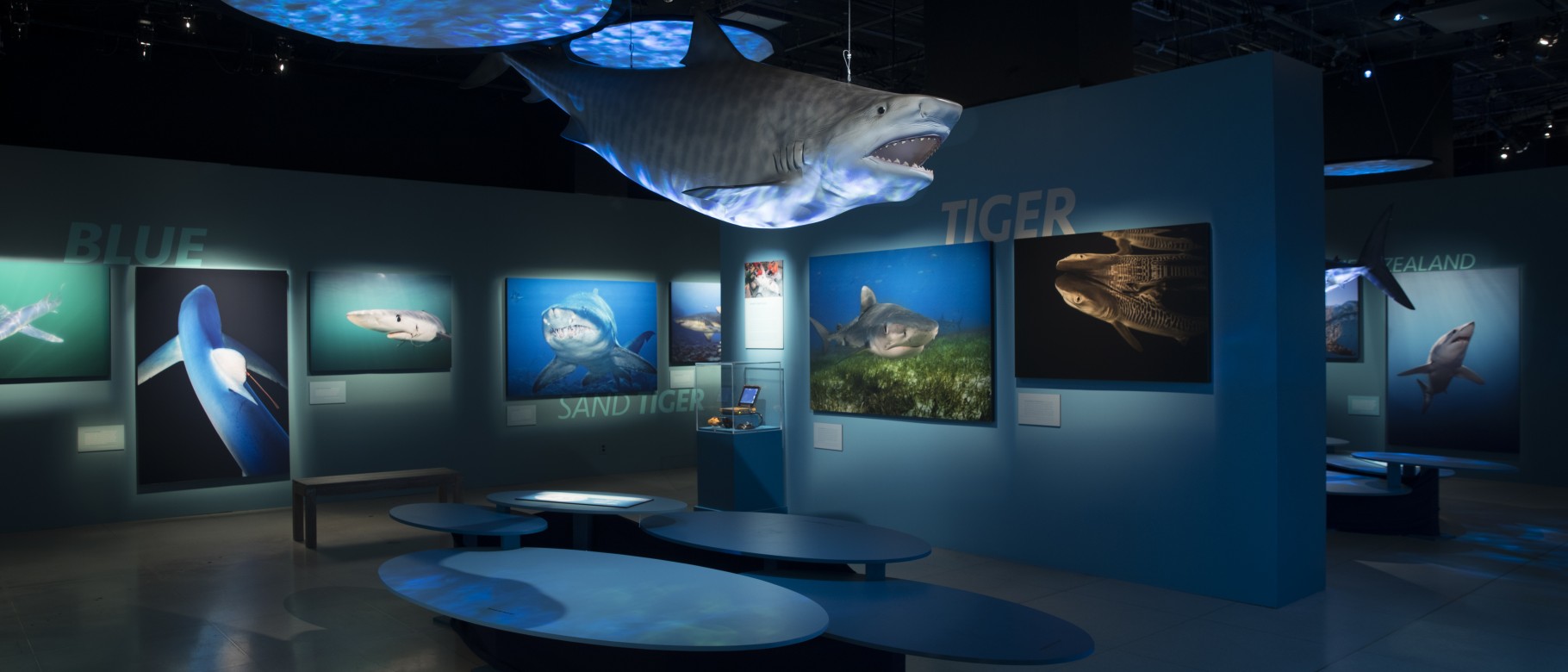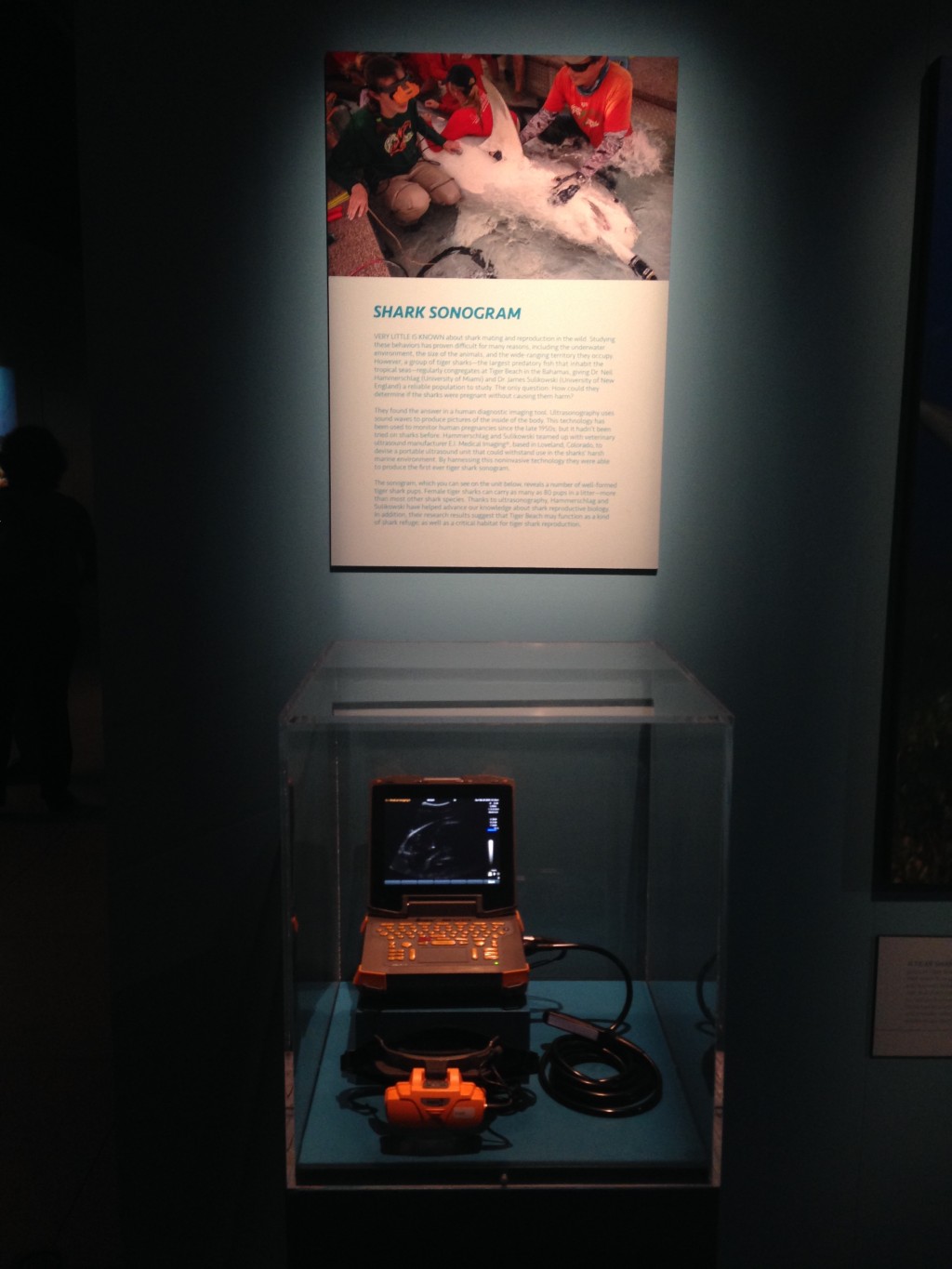UNE featured in National Geographic Museum “Sharks” exhibit

Ultrasound technology used by James Sulikowski, Ph.D., professor of Marine Science at the University of New England, to study the reproductive behavior of sharks is on display at the National Geographic Museum in Washington, D.C.
The ultrasound machine, originally intended for humans, was designed to stand up to the harsh conditions at sea. The technology provided the first opportunity for scientists to study shark reproduction on live sharks. The method became famous when Sulikowski and Neil Hammerschlag, Ph.D., of the University of Miami used it on pregnant tiger sharks in an episode of “Shark Week” in 2016.
“Thanks to ultrasonography, Hammerschlag and Sulikowski have helped advance our knowledge about shark reproductive biology,” the description beside the display reads. “In addition, their research results suggest that Tiger Beach may function as a kind of shark refuge, as well as a critical habitat for tiger shark reproduction.”
The exhibit runs through October 15, 2017. Learn more.
To learn more about the University of New England’s Department of Marine Sciences visit www.une.edu/cas/marine
To learn more about the University of New England’s Center for Excellence in Marine Sciences, visit www.une.edu/research/msc
To apply, visit www.une.edu/admissions
